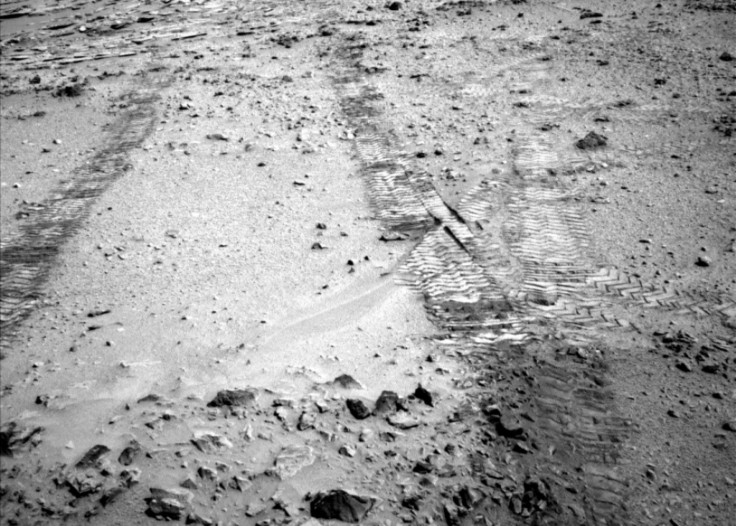Curiosity Reveals Mars' Atmosphere Is Vanishing, But May Have Supported Life

A new report from NASA’s Mars rover Curiosity gives excellent support to the theory that the Red Planet may have once supported life. A pair of new NASA studies suggests that billions of years ago, Mars contained noticeable amounts of methane in the atmosphere. Because 99 percent of methane on Earth is produced by living creatures, researchers believe that Mars may have once hosted microscopic life, at least.
According to Wired, researchers have long suspected methane on Mars, which would point to the possibility of microbial life. Unfortunately for those theories, Mars’ atmosphere has rapidly deteriorated, and there is no longer significant methane to be found. At Gale Crater, where Curiosity landed last year, methane only composes 2.7 parts per billion of Mars’ atmosphere, compared to 1,700 ppb of methane on Earth. This means that there’s little chance for microbial life on Mars in the present, but the past is a different story.
Meanwhile, another recent NASA study confirms that most of Mars’ atmosphere has been depleted over the years. By examining the amount of different isotopes in the atmosphere, Curiosity’s Sample Analysis at Mars (SAM) device was able to determine that much of Mars’ atmosphere has vanished. Specifically, SAM noticed a pattern of heavier elemental isotopes being more prevalent than lighter ones, which the space agency says is “consistent with a loss of a substantial fraction of Mars' original atmosphere.”
The upshot of this is that while today, Mars has a thin, light atmosphere incapable of supporting life, in the past, Mars hosted a much thicker, richer atmosphere -- perfect conditions for life.
NASA’s next mission to Mars, the Mars Atmosphere and Volatile Evolution Mission (MAVEN), plans to study exactly how and why Mars lost the majority of its atmosphere. Currently, NASA researchers have a hunch that it escaped into space billions of years ago.
The news comes only a day after a new study by the California Institute of Technology suggested that a giant ocean may have existed on Mars. Previously, Curiosity determined that it was likely that Mars once hosted smaller streams and rivers of water, but before now, there has been little proof that the Red Planet was ever home to any large bodies of water.
Caltech researchers spotted evidence of a series of inverted channels located on the Aeolis Dorsa, a vast plain about 620 miles east of Gale Crater, where NASA’s rover Curiosity is exploring. Researchers believe that the channels must have drained water into a central source, leading to the conclusion that an ocean may have existed. "This is probably one of the most convincing pieces of evidence of a delta in an unconfined region — and a delta points to the existence of a large body of water in the Northern Hemisphere of Mars," said Roman DiBiase, a postdoctoral scholar at Caltech and lead author of the study.
© Copyright IBTimes 2024. All rights reserved.












